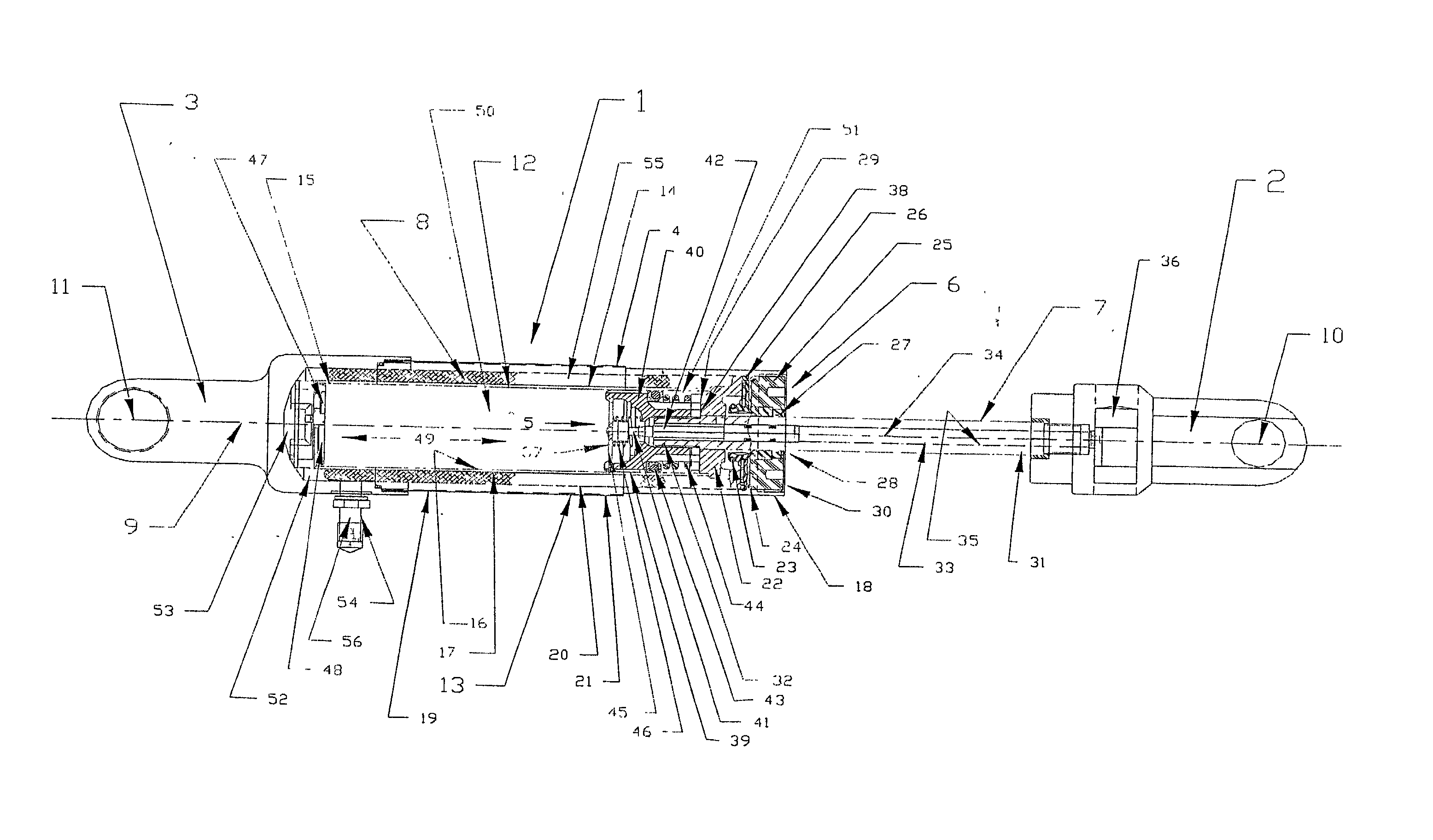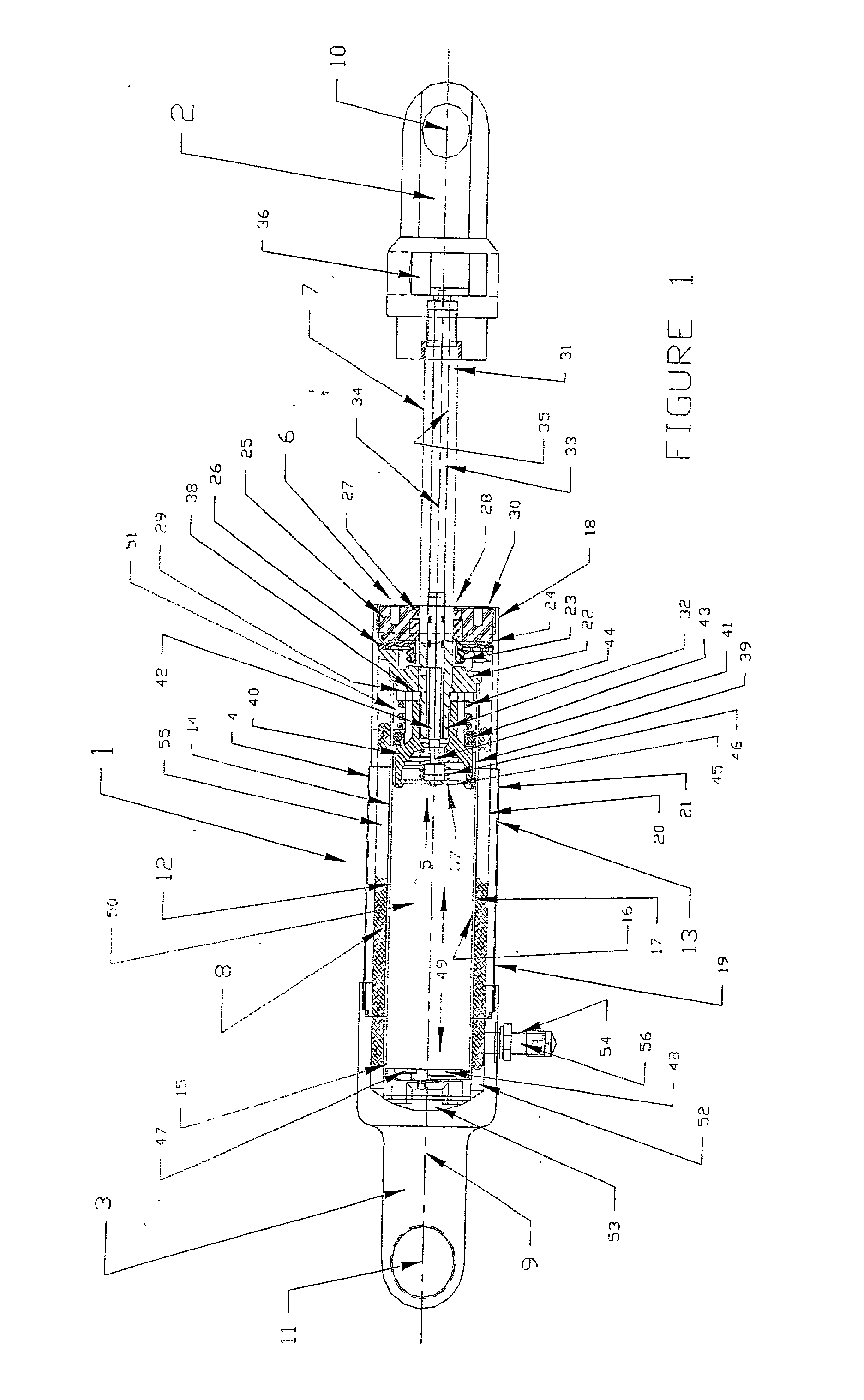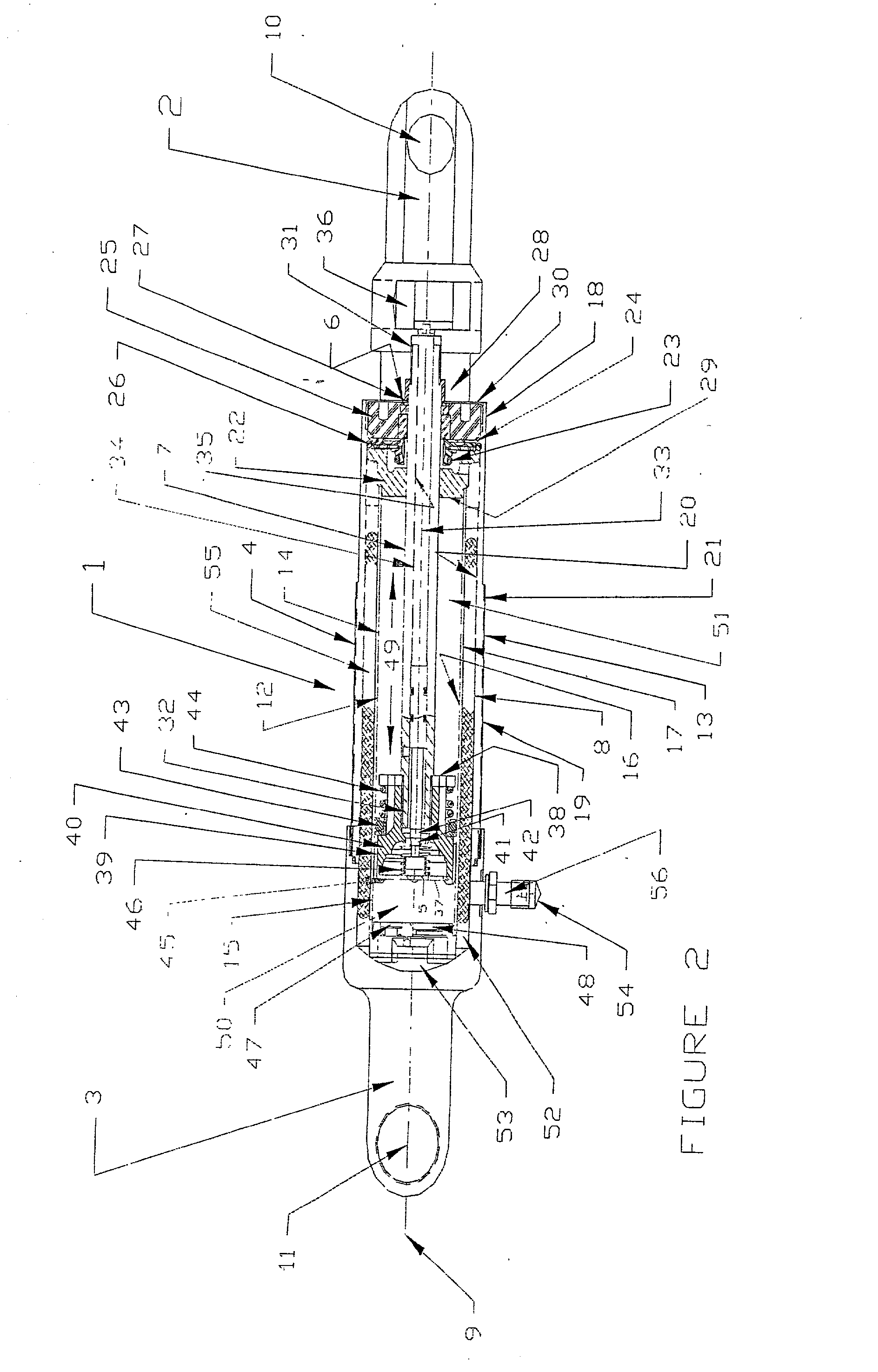Bladder for use in a damping device
a technology for damping devices and blades, which is applied in the direction of shock absorbers, vibration dampers, springs/dampers, etc., can solve the problems of hydraulic fluid separation, oil, and limited use of twin tube shock absorbers to vehicles,
- Summary
- Abstract
- Description
- Claims
- Application Information
AI Technical Summary
Benefits of technology
Problems solved by technology
Method used
Image
Examples
Embodiment Construction
[0023] FIG. 1 and FIG. 2 illustrate an embodiment of a damping device in accordance with the present invention. In an embodiment,the damping device is a twin tube shock absorber 1, and comprises rod end mounts 2 and 3, a housing assembly 4, a piston assembly 5 and end cap assembly 6, a piston rod 7 and a bladder 8, located within the housing assembly 4. The piston assembly 5 is mounted within the housing assembly 4 for movement along the longitudinal axis 9. The piston assembly 5 is shown in FIG. 1 in an extended position and a retracted position in FIG. 2.
[0024] In an embodiment, rod end mount 2 and body end mount 3 are located on opposite ends of the shock absorber 1. Rod end mount 2 comprises an opening 10, within which is mounted a bushing, which is not shown in FIG. 1, that is comprised of durable, compressible material. The body end mount 3 is also comprised of an opening 11, within which is mounted a bushing comprised of a durable, compressible material.
[0025] In an embodimen...
PUM
 Login to View More
Login to View More Abstract
Description
Claims
Application Information
 Login to View More
Login to View More - R&D
- Intellectual Property
- Life Sciences
- Materials
- Tech Scout
- Unparalleled Data Quality
- Higher Quality Content
- 60% Fewer Hallucinations
Browse by: Latest US Patents, China's latest patents, Technical Efficacy Thesaurus, Application Domain, Technology Topic, Popular Technical Reports.
© 2025 PatSnap. All rights reserved.Legal|Privacy policy|Modern Slavery Act Transparency Statement|Sitemap|About US| Contact US: help@patsnap.com



